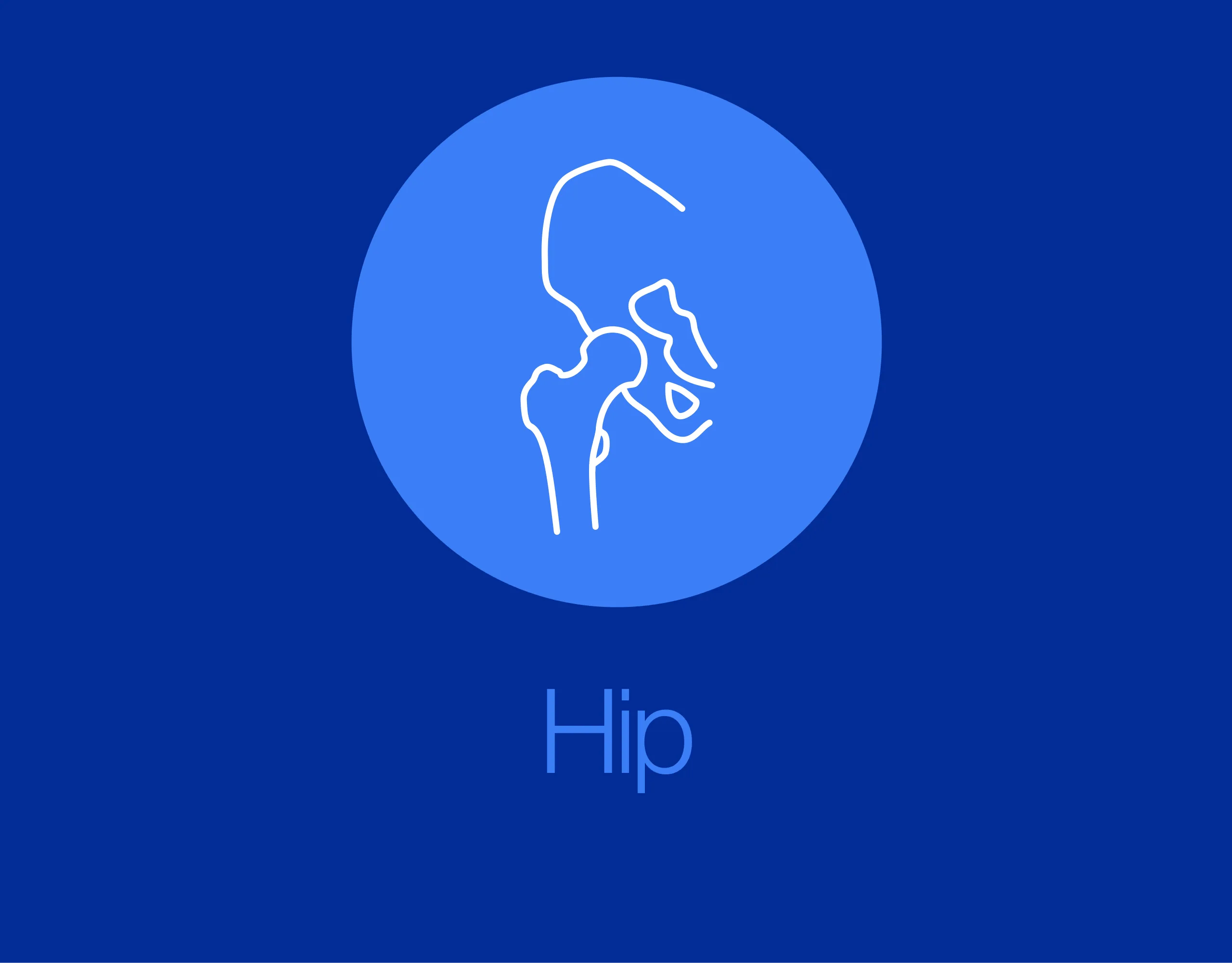Temporary Thomas splint
1. General considerations
Thomas’ splint
Temporary stabilization of femoral shaft fractures can be achieved using the Thomas’s splint apparatus. It can also be used for transportation of patients. This can provide adequate fracture stability and pain relief until definitive stabilization is carried out.
If this method of treatment is chosen the appropriate size of the Thomas’s splint has to be selected.
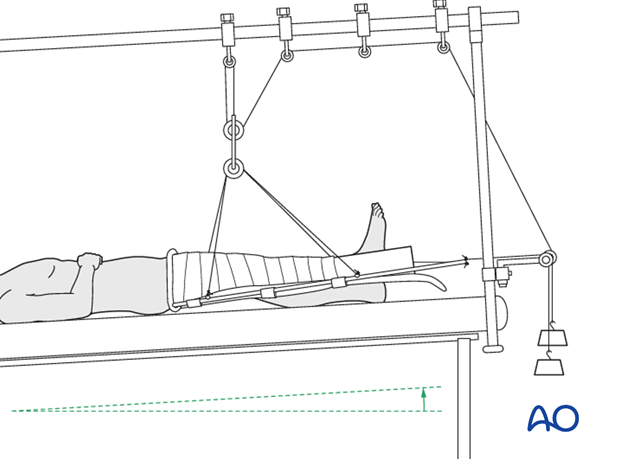
Prolonged temporary treatment
If prolonged temporary treatment is envisaged, consider other methods of treatment (external fixator) to avoid soft-tissue complications (pressure sores, skin blistering under adhesive strip.)
Medical treatment
During immobilization, pharmaceutical thromboembolic prophylaxis is desirable.
Non-steroidal anti-inflammatory medication should be avoided due to reported adverse effects on fracture healing.
Thomas’s splint with children
In older children it can be used as a definitive method of treatment (for a period of four to six weeks). In younger children, the presence of the ring can displace a short proximal fragment.
Definitive treatment
In cases where there are contraindications to surgery and/or socio-economic issues do not permit fracture fixation, Thomas’s splint traction can be used as the definitive method of treatment.
Teaching video
AO teaching video: Application of the Thomas splint
2. Positioning
The patient should lie down on his or her back.
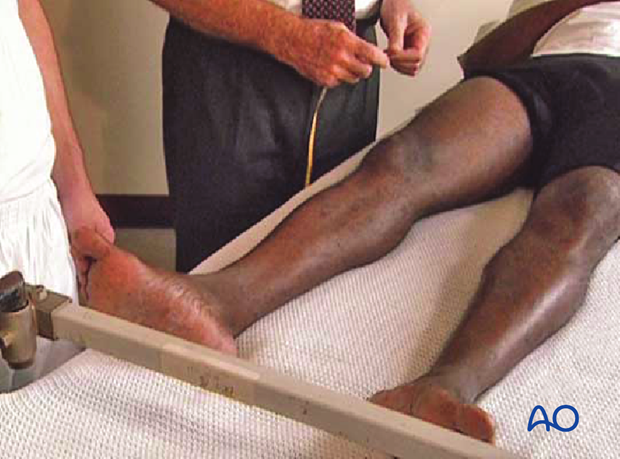
3. Size and length of the Thomas’s splint
Circumference
To begin, the circumference of the thigh is measured to establish the size of the inner circumference of the ring of the Thomas‘s splint.
Here the circumference of the thigh is measured as sixty centimeters.
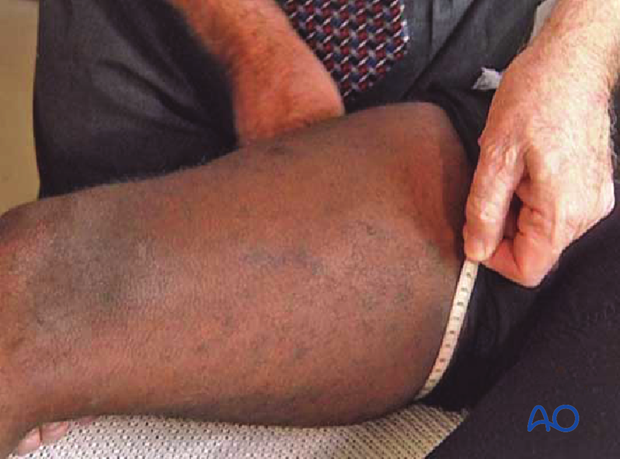
When choosing the Thomas‘s splint to be used, four centimeters should be added to the measurement to allow for swelling.
In this example, a splint with an inner circumference of sixty-four centimeters is selected.
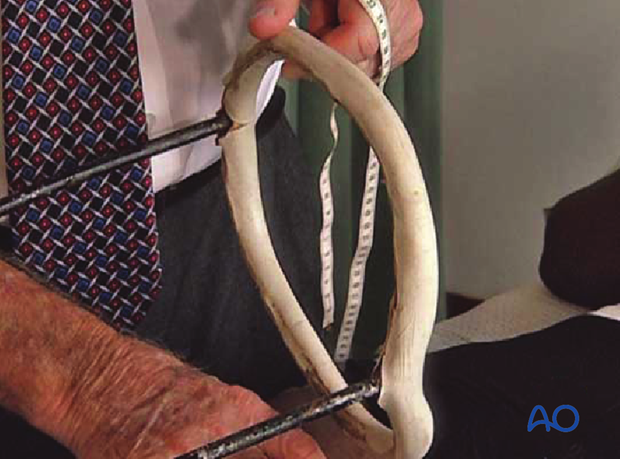
Length
The length of the patient’s leg is measured, and twenty centimeters are added to establish the length of the Thomas‘s splint.
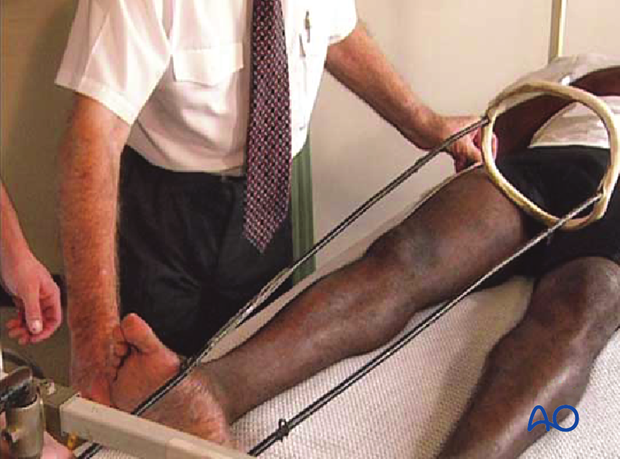
4. Preparation
Tinc Benz Co
Tinc Benz Co is used on the skin of the leg to improve the adhesion of the adhesive traction strip.
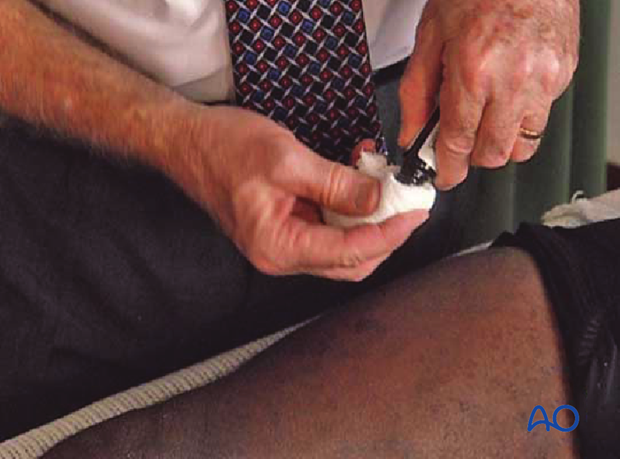
On the medial side, beginning at the groin, Tinc benz co is applied down to the ankle.
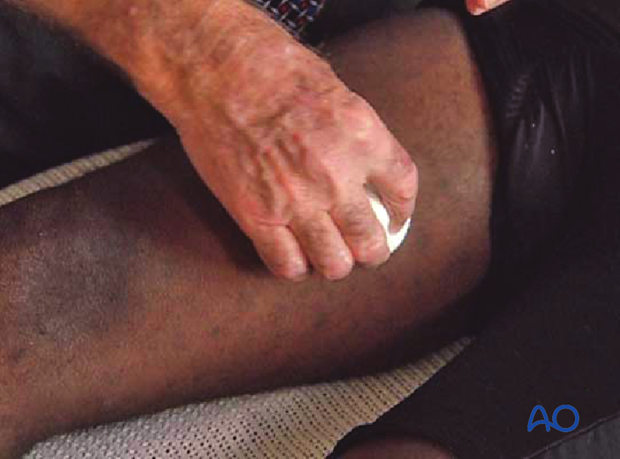
The adhesive also is spread on the lateral side from the greater trochanter down to the ankle.
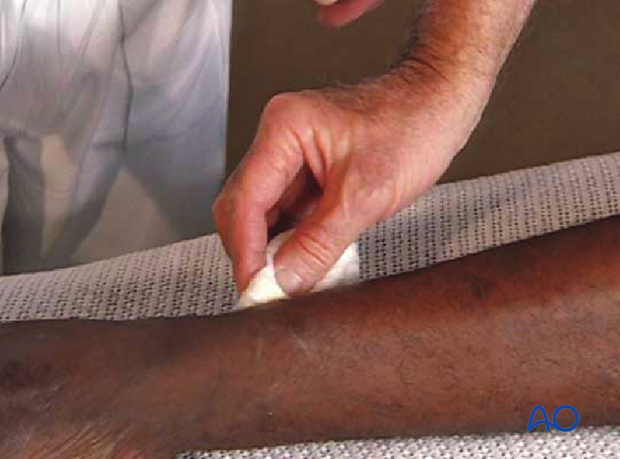
Application of adhesive traction strip
The adhesive traction assembly will now be applied. It is important that the material does not stretch lengthwise.
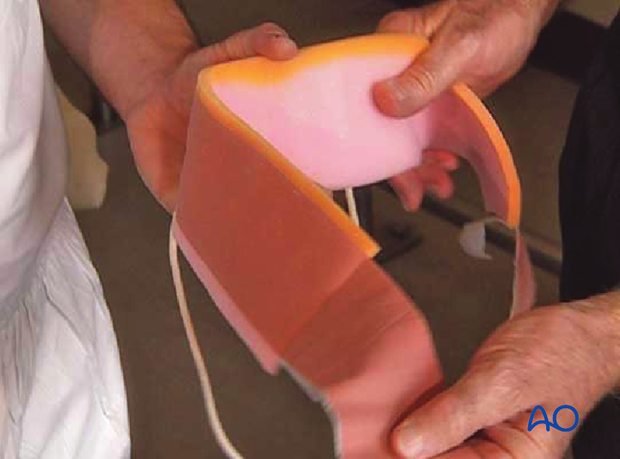
The lower part of the strip is padded, to prevent pressure sores forming over the medial and lateral malleoli.
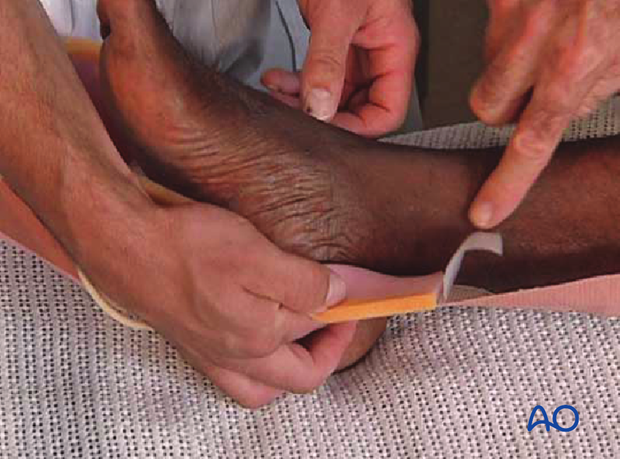
The backing is removed, and the adhesive strip is applied on the medial side, reaching proximally up to the groin.
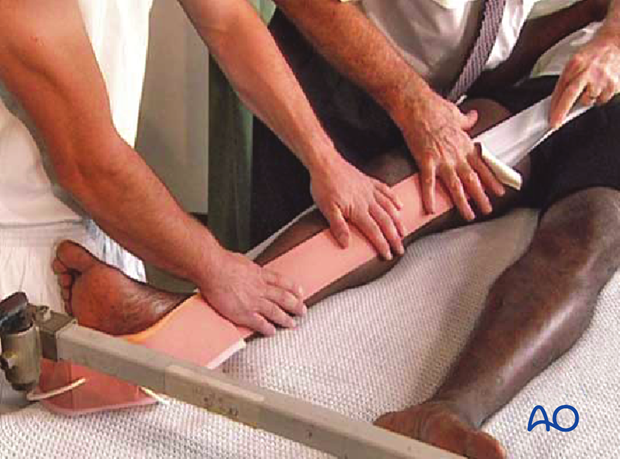
On the lateral side, the backing is removed, and the adhesive strip is applied as far as the greater trochanter. Care is taken to verify that there are no wrinkles in the strip, as they can lead to pressure sores.
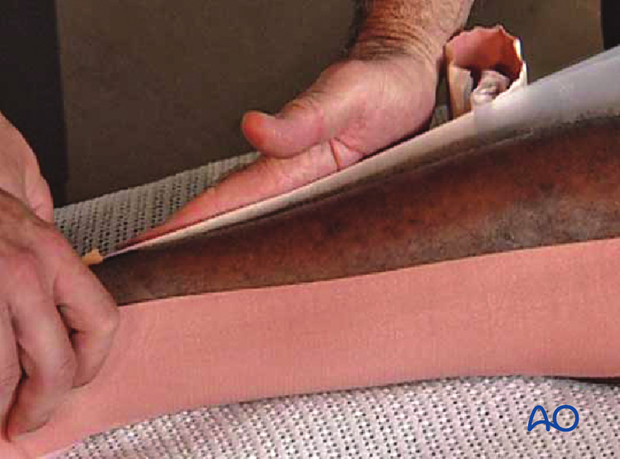
Bandage
Starting four finger-breadths above the ankle joint, a circular crêpe bandage is wound proximally, with moderate tension, towards the groin.
Again, it is crucial that there be no wrinkles in the bandage.
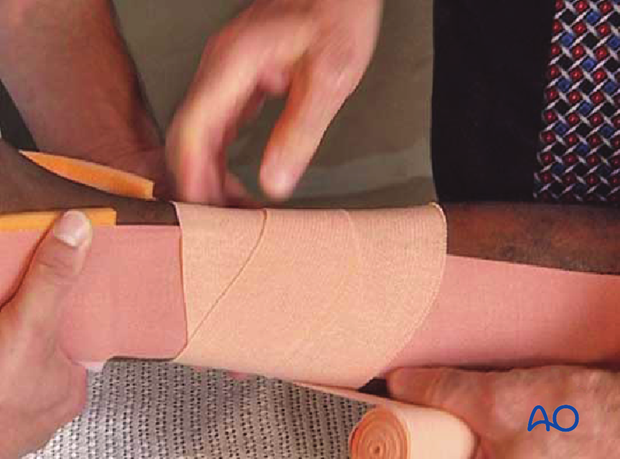
A second, proximal bandage ensures that the adhesive strip is secured as far as the groin.
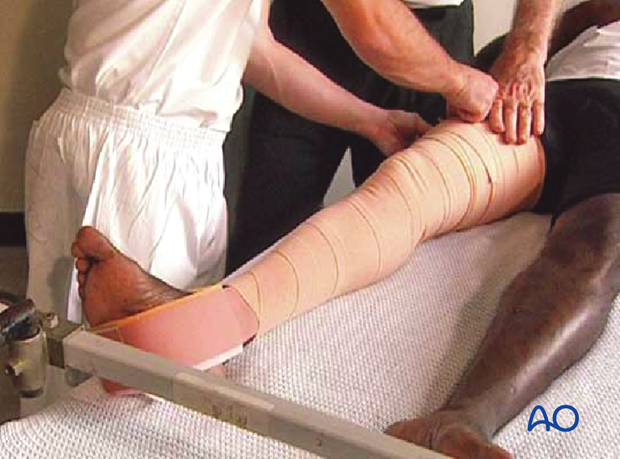
5. Application of Thomas’s splint
Passing the splint over the leg
The Thomas‘s splint is applied by passing it over the patient’s leg, upwards, to the groin.
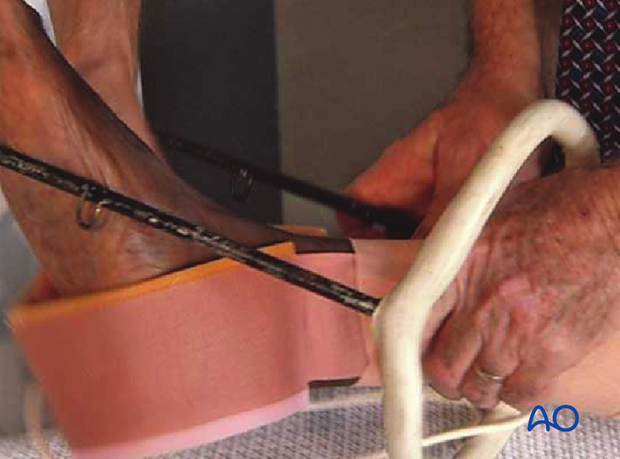
Limb support
Either the Thomas’s splint is fitted with slings to support the limb prior to passing it over the leg, or a Kramer wire, which must be very well-padded, to prevent pressure sores, is placed under the patient’s leg.
Proximally the support extends to the ring of the splint.

If a Kramer wire support is used, it should be bent slightly under the patient’s knee.
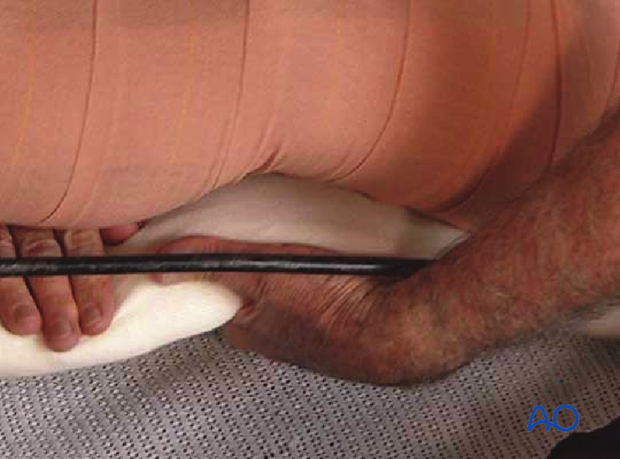
The Kramer wire must be further bent to the angle of the heel, in order to prevent pressure sores under the heel.
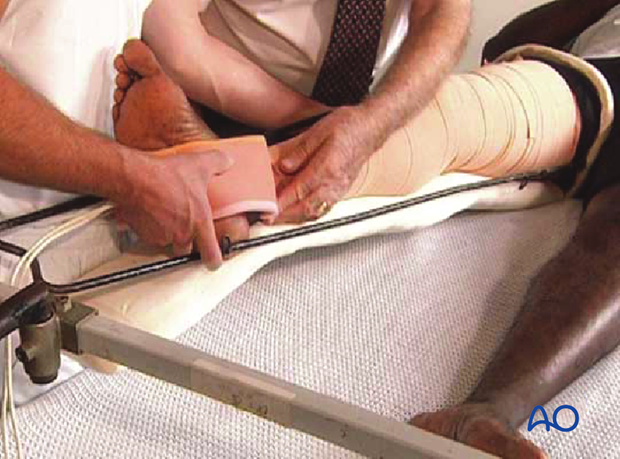
Secure leg and Thomas's splint
Flannelette bandage slings are used to support the leg on the Thomas‘s splint, whilst also providing support to the Kramer wire.
To complete the bandaging proximally it is passed over the ring of the Thomas‘s splint, under the Kramer wire, around the Thomas‘s splint, back under the Kramer wire, and is secured on the lateral side with a reef knot.

The second and third flannelette slings are applied in the same manner.
The second bandage is located behind the knee.
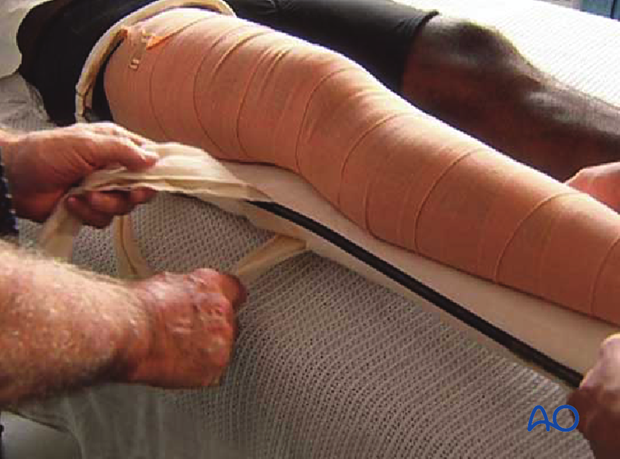
The third bandage is located just above the ankle, posterior to the Achilles tendon.

Traction
Traction is applied to the fractured femur by tightly tying the cord at the end of the traction strip assembly to the distal end of the Thomas‘s splint.
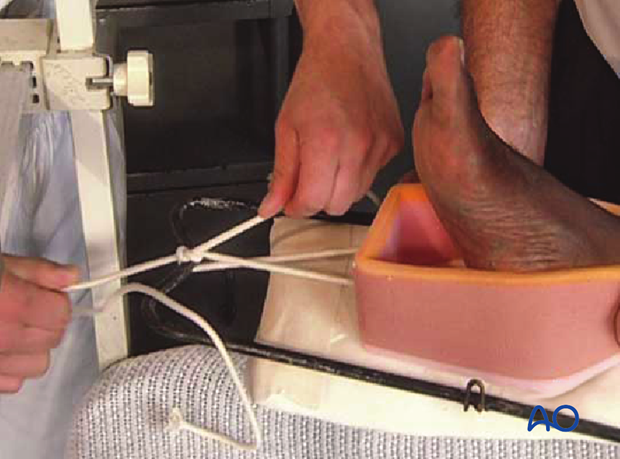
6. T-pulley installation
The T-pulley does not exert traction, but it suspends the patient’s leg dynamically to allow the patient to use a bed pan, to be bathed, etc.
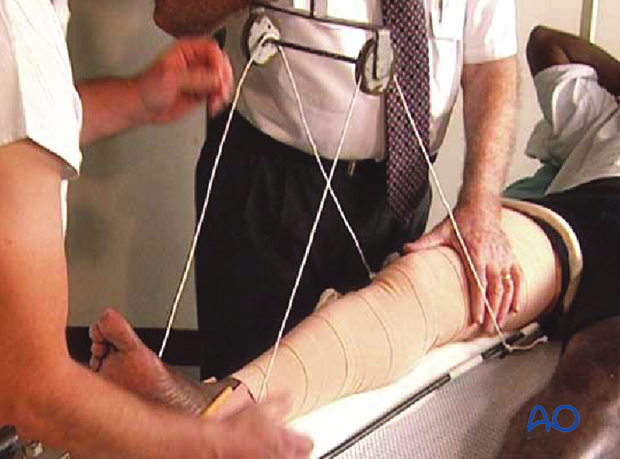
The T-pulley is fixed in place.
It is suspended by tying the cord securely to the top.
The cord is passed over a proximal pulley of the traction frame, downwards and under the top T-pulley, then it goes upwards, over a second more proximal frame pulley.
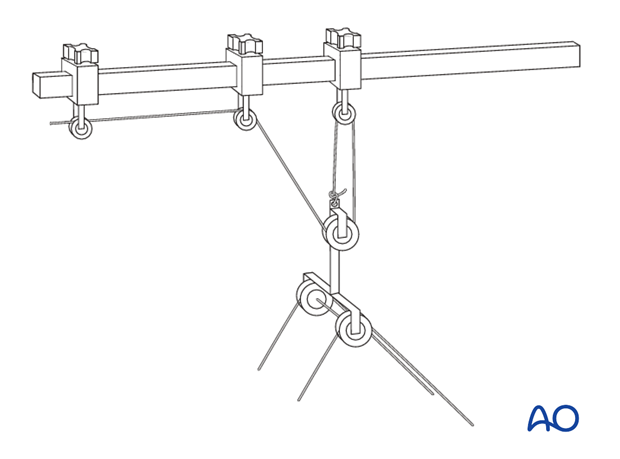
The cord is passed distally, over the remaining frame pulleys …

… and sufficient weights are attached to suspend the patient’s leg.
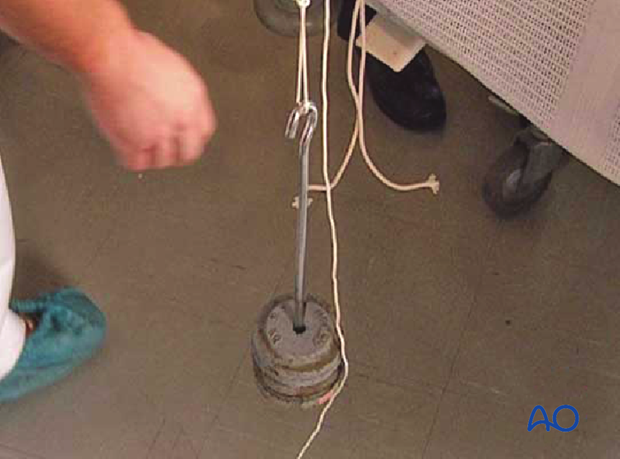
Retightening of splint
Additional traction may be applied by re-tightening and knotting the traction cord at the distal end of the Thomas’s splint.

7. Re-tightening of splint
Additional traction may be applied by re-tightening and knotting the traction cord at the distal end of the Thomas’s splint.
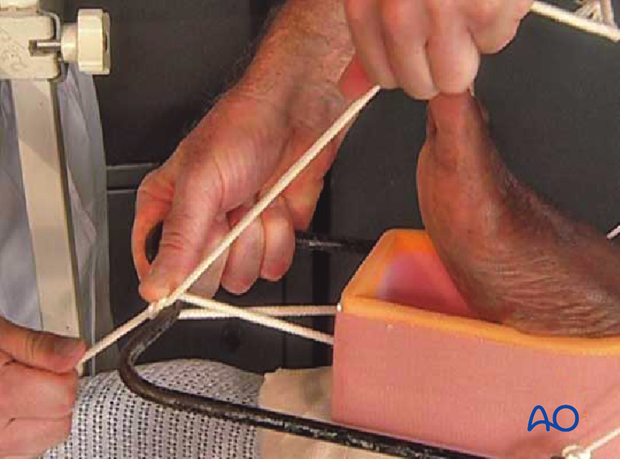
8. Reduction
The hands may be used to reduce the femoral fracture.
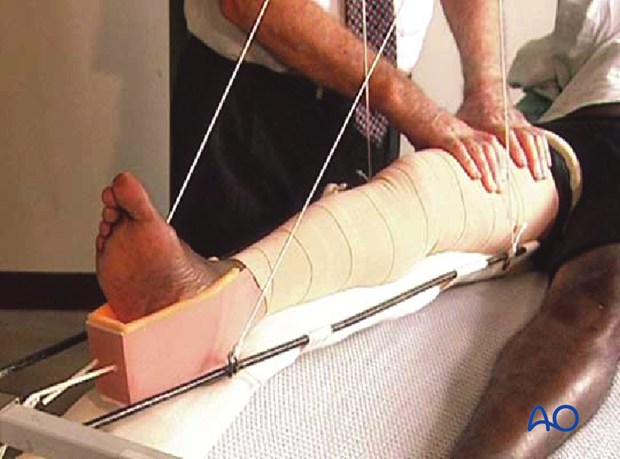
9. Final splint adjustments
Counter traction
It should be noted that tightening the distal end of the traction cord forces the ring of the Thomas‘s splint proximally, possibly risking pressure sores at the groin.
To prevent this proximal displacement, counter traction with weights is applied to the end of the Thomas‘s splint, as shown here.
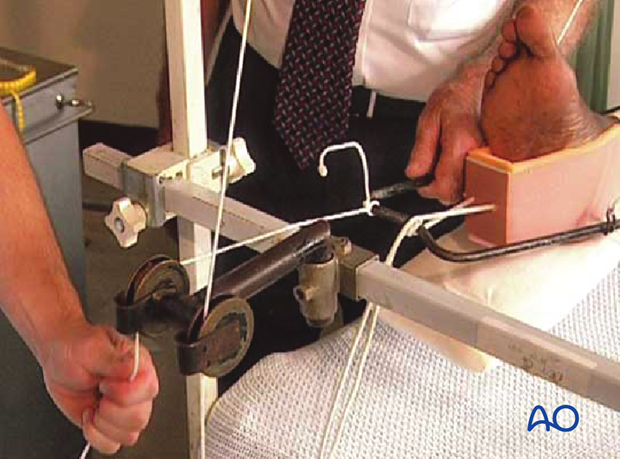
Eight kilograms are generally sufficient for an adult patient, with less weight used for a younger person.
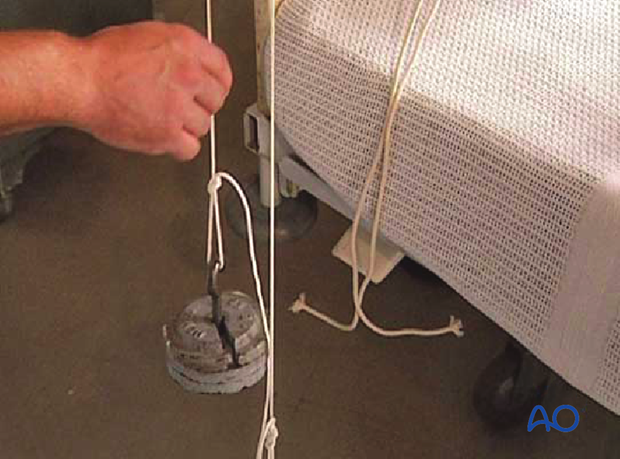
Elevation of foot of the bed
The weights at the distal end of the splint will cause the patient to tend to slip gradually towards the foot of the bed.
To prevent this, the foot of the bed is elevated, so that the weight of the patient balances the weight at the distal end.
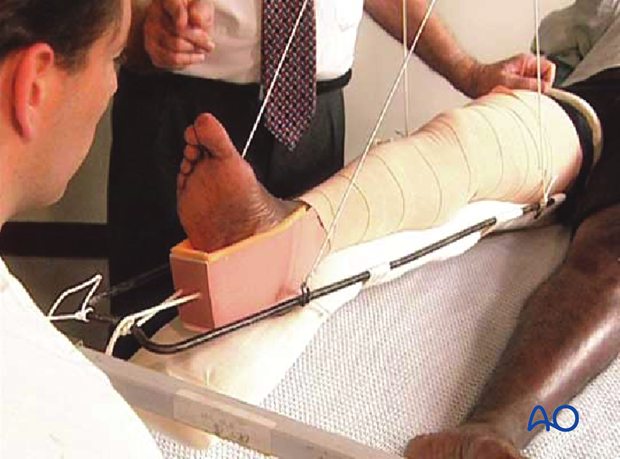
Pressure points
A finger is passed around between the ring of the Thomas‘s splint and the groin to verify that there are no pressure points.
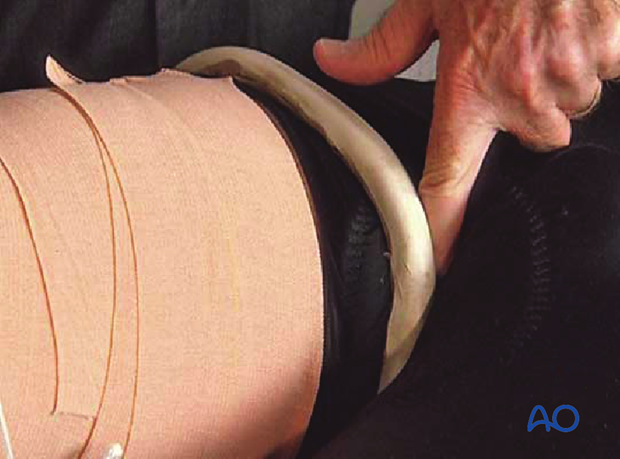
If pressure points are found, then the tension in the traction cord tied to the Thomas‘s splint should be relaxed a little.
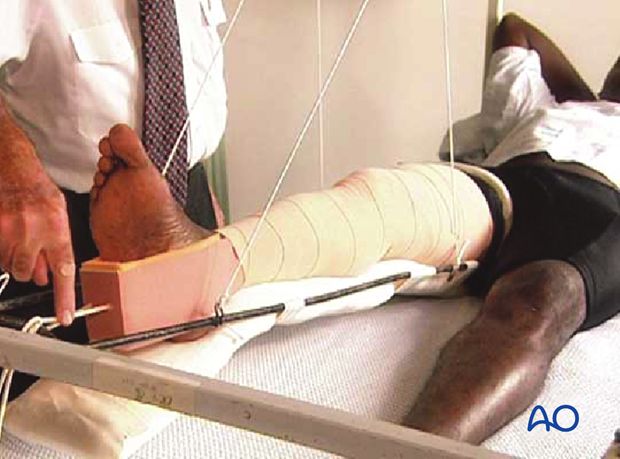
10. Completed Thomas’s splint
The application of the Thomas's splint …

… is now complete.
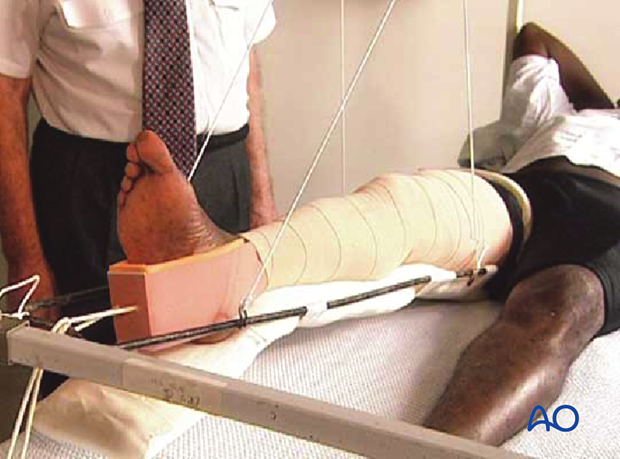
11. Aftertreatment for a definitive treatment by Thomas's splint
For aftercare and rehabilitation following nonoperative treatment please refer to your local protocol.
